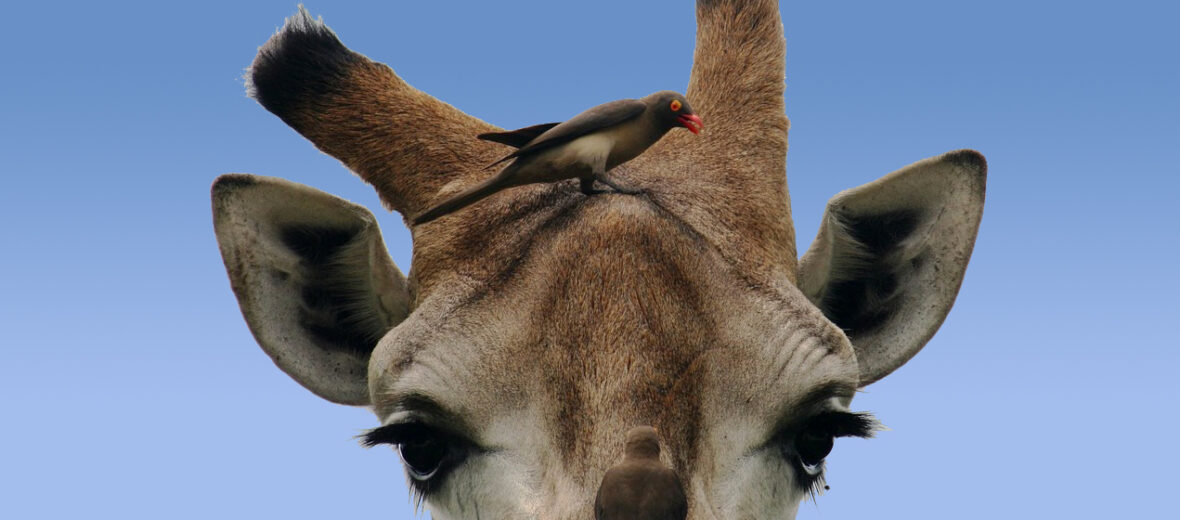
The oxpecker is a passerine bird that makes a living cleaning parasites from other animals. There are 2 species: the red-billed & the yellow-billed. These birds also harbor a dark secret. More on that in a bit. They can be found in Sub-Saharan Africa. These birds prefer grassy plains, open savannas, and regions with scattered shrubs. Due to arsenic poisoning and over hunting of rhinoceroses and buffaloes, these birds almost went extinct. However, a successful captive breeding program was able to reintroduce numerous oxpeckers back into the wild. Now they are listed as Least Concern by the IUCN.
First the Stats…
Scientific name: Buphagus
Weight: Up to 1.75 ounces
Length: Up to 9 inches
Wingspan: Up to 18 inches
Lifespan: Up to 15 years
Now on to the Facts!
1.) The oxpecker’s feet are arranged with 3 toes facing forward and 1 facing backward. This is a perching style foot, which helps them hang on the animals they perch on when feeding.
2.) They feast on flies, lice, ticks, and worms that are pulled from the fur of domestic animals and large antelopes, cattle, buffaloes, giraffes, and rhinoceroses.
3.) With a scissoring or pecking movement, they go to work removing parasites from their hosts.
4.) Oxpeckers also aid in predator detection and will sound an alarm call when 1 comes near.
5.) The oxpecker will also eat earwax. The bacteria harbored in earwax might aid in the bird’s digestion. This has yet to be determined.
But wait, there’s more on the oxpecker!
6.) There are some animals, like elephants, hartebeests, and waterbucks, that won’t stand for the services and subsequent parasitism of the oxpeckers. They will chase them away, at first sight.
7.) Using chattering and whistling calls, these birds communicate with 1 another frequently.
Did you know…?
Oxpeckers are considered parasites because they will also drink their host’s blood, besides being custodians. There’s a price for everything.
8.) Courting and mating takes place on the backs of larger animals.
9.) Females lay up to 3 eggs in a tree hollow or rock crevice.
10.) Nests are lined with not only grass, but the hair of their hosts.
But wait, there’s still more on the oxpecker!
11.) The Swahili name for the red-billed oxpecker is Askari wa kifaru, which translates to the rhino’s guard.
12.) Oxpeckers can eat up to 400 ticks a day!
Now a Short Oxpecker Video!
Be sure to share & comment below! Also, check out the Critter Science YouTube channel. Videos added frequently!
Want to suggest a critter for me to write about? Let me know here.



